#dye penetrant testing
Explore tagged Tumblr posts
Text
Dye Penetrant Inspection In Pune: A Comprehensive Guide
Introduction to Dye Penetrant Inspection
Dye Penetrant Inspection (DPI), also known as Liquid Penetrant Testing (LPT), is a widely used non-destructive testing (NDT) method that helps in detecting surface-breaking defects in non-porous materials. This technique is crucial in industries such as aerospace, automotive, and manufacturing, where the integrity of materials and components is paramount.
The method's simplicity, cost-effectiveness, and high sensitivity make it an essential tool in the quality control processes of various industries. DPI is particularly effective for detecting fine cracks, porosity, and other discontinuities that might not be visible to the naked eye.
Principles of Dye Penetrant Inspection
The basic principle of DPI involves the application of a visible or fluorescent dye to the surface of the material under inspection. The dye penetrates any surface-breaking defects by capillary action. After a suitable dwell time, the excess dye is removed from the surface, and a developer is applied. The developer acts as a blotter, drawing the dye out of the defects to form an indication, which is then visible under suitable lighting conditions.
Step-by-Step Process of DPI
Surface Preparation:
The surface of the material to be inspected must be clean and free from contaminants such as oil, grease, or rust. Surface preparation is crucial as contaminants can block the dye from penetrating the defects.
Application of Penetrant:
The penetrant is applied to the surface of the material. It can be applied by brushing, spraying, or dipping, depending on the size and shape of the component.
Dwell Time:
The penetrant is allowed to dwell on the surface for a specific time, known as dwell time. This period allows the dye to penetrate any surface-breaking defects. The dwell time varies depending on the material, type of penetrant, and the size of the defects to be detected.
Excess Penetrant Removal:
After the dwell time, the excess penetrant is removed from the surface. Care must be taken to remove only the surface penetrant, leaving the penetrant that has entered the defects intact. This step is usually performed using a solvent or water rinse.
Application of Developer:
A developer is applied to the surface, which acts like a blotter, drawing out the penetrant trapped in defects. This helps in making the defect indications more visible.
Inspection:
The surface is inspected under suitable lighting conditions. For visible dye penetrants, white light is used, while ultraviolet (UV) light is used for fluorescent penetrants. The indications are then analyzed to determine the nature and extent of the defects.
Post-Cleaning:
After the inspection, the component is cleaned to remove any remaining penetrant and developer.
Types of Penetrants
Dye Penetrant Inspection utilizes different types of penetrants, which can be broadly categorized based on their properties:
Visible Dye Penetrants:
These penetrants are typically red and are visible under white light. They are easy to use and do not require special lighting for inspection. Visible dye penetrants are often used in field applications where UV light is not available.
Fluorescent Dye Penetrants:
These penetrants fluoresce under UV light, making defect indications highly visible in dark conditions. Fluorescent penetrants are more sensitive than visible dyes and are used in critical applications where the detection of minute defects is essential.
Water-Washable Penetrants:
These penetrants can be easily removed with a water wash, simplifying the excess penetrant removal step.
Solvent-Removable Penetrants:
These require a solvent for removing the excess penetrant, providing more control over the removal process and reducing the risk of over-cleaning.
Post-Emulsifiable Penetrants:
These penetrants require the application of an emulsifier to make the excess penetrant water-washable. This method offers high sensitivity and is used for detecting very fine defects.
Developers Used in DPI
The developer plays a crucial role in highlighting defects by drawing the penetrant out of them. There are several types of developers used in DPI:
Dry Powder Developer:
This is the simplest form of developer and is often used in conjunction with fluorescent penetrants. It is applied by dusting or spraying, and it provides a white contrasting background for the penetrant indications.
Aqueous Developer:
This is a suspension of developer particles in water. It is applied by spraying, dipping, or flooding the component. The water is then evaporated, leaving a uniform layer of developer on the surface.
Solvent-Based Developer:
This developer consists of developer particles suspended in a solvent. It is applied by spraying and is typically used with solvent-removable penetrants. The solvent evaporates, leaving a thin layer of developer on the surface.
Nonaqueous Wet Developer:
This developer is a suspension of developer particles in a volatile solvent. It is applied by spraying and is used for both visible and fluorescent penetrants. It provides a fast-drying, uniform coating that enhances the visibility of indications.
Applications of Dye Penetrant Inspection
Dye Penetrant Inspection is used across a wide range of industries due to its versatility and effectiveness in detecting surface-breaking defects. Some of the common applications include:
Aerospace Industry:
DPI is extensively used in the aerospace industry to inspect aircraft components such as turbine blades, landing gear, and fuselage sections. The detection of cracks, porosity, and other surface defects is crucial to ensure the safety and reliability of aircraft.
Automotive Industry:
In the automotive industry, DPI is used to inspect engine components, transmission parts, and other critical assemblies. It helps in identifying defects that could lead to component failure and ensures the longevity and performance of vehicles.
Manufacturing Industry:
DPI is applied during the manufacturing process to ensure the quality of welds, castings, and forged components. It helps in detecting defects that could compromise the structural integrity of the finished product.
Power Generation:
Components used in power generation, such as turbines and pressure vessels, undergo DPI to detect surface cracks and other discontinuities that could lead to catastrophic failures.
Oil and Gas Industry:
DPI is used to inspect pipelines, storage tanks, and other critical infrastructure in the oil and gas industry. It helps in detecting leaks, cracks, and corrosion that could result in environmental hazards and financial losses.
Medical Devices:
In the medical device industry, DPI is used to inspect implants, surgical instruments, and other components to ensure they are free from defects that could harm patients.
Advantages of Dye Penetrant Inspection
Dye Penetrant Inspection offers several advantages, making it a preferred NDT method for detecting surface defects:
High Sensitivity:
DPI is highly sensitive to small surface-breaking defects, making it effective for detecting fine cracks, porosity, and other discontinuities.
Versatility:
DPI can be used on a wide range of materials, including metals, ceramics, and plastics, as long as they are non-porous.
Cost-Effective:
The equipment and materials required for DPI are relatively inexpensive compared to other NDT methods, making it a cost-effective solution for routine inspections.
Simplicity:
The DPI process is straightforward and does not require complex equipment or extensive operator training. This makes it easy to implement in various industries.
Portability:
DPI equipment is portable and can be used in field inspections, making it ideal for inspecting large or immovable components.
Immediate Results:
The results of DPI are immediate, allowing for quick decision-making and minimizing downtime in industrial processes.
Limitations of Dye Penetrant Inspection
Despite its advantages, Dye Penetrant Inspection has certain limitations that must be considered:
Surface-Breaking Defects Only:
DPI is limited to detecting defects that are open to the surface. It cannot detect subsurface defects, which may require other NDT methods such as ultrasonic testing or radiography.
Material Restrictions:
DPI is not suitable for inspecting porous materials, as the penetrant can enter the pores, leading to false indications or difficulty in removing the penetrant.
Surface Preparation:
The surface of the material must be thoroughly cleaned before applying the penetrant. Contaminants such as oil, grease, or rust can prevent the penetrant from entering defects, leading to missed indications.
Post-Cleaning Requirement:
After inspection, the component must be thoroughly cleaned to remove any residual penetrant and developer. Failure to do so can result in corrosion or other issues.
Operator Dependency:
The effectiveness of DPI relies heavily on the skill and experience of the operator. Proper training is essential to ensure accurate inspection results.
Environmental Considerations:
The use of certain penetrants and developers may raise environmental and safety concerns. Proper handling, disposal, and ventilation are necessary to mitigate these risks.
Standards and Codes for Dye Penetrant Inspection
Dye Penetrant Inspection is governed by various international standards and codes to ensure consistency and reliability in inspection
#Dye penetrant inspection in pune#dye penetrant#liquid penetrant testing#dye penetrant testing#liquid dye penetrant testing#penetrant inspection#liquid penetrant inspection#liquid penetrant
0 notes
Text
Integrated NDE Solution in Pune: Excellence in Non-Destructive Testing with Liquid Penetrant Inspection
In industries where the integrity and reliability of materials are critical, non-destructive testing (NDT) is an essential practice. Among the various NDT methods, liquid penetrant testing (LPT) stands out for its effectiveness in detecting surface defects in non-porous materials. Integrated NDE Solution in Pune excels in providing comprehensive NDT testing services, with a specialized focus on liquid dye penetrant testing. This article delves into the intricacies of liquid penetrant testing, highlights its benefits, and explores the cutting-edge services and equipment offered by Integrated NDE Solution.
Understanding Liquid Penetrant Testing
Liquid penetrant testing, also known as dye penetrant inspection, is a widely used non-destructive testing method for detecting surface-breaking defects in non-porous materials. This technique is applicable to a variety of materials, including metals, ceramics, and plastics. LPT is renowned for its simplicity, cost-effectiveness, and high sensitivity in revealing surface discontinuities such as cracks, seams, and porosity.
How Liquid Penetrant Testing Works
The process of liquid penetrant testing involves several steps:
Surface Preparation: The surface of the component is thoroughly cleaned to remove any dirt, grease, or other contaminants that could obstruct the penetrant from entering defects.
Application of Penetrant: A visible or fluorescent dye penetrant is applied to the surface of the component. The penetrant is allowed to dwell for a specific period, during which it seeps into any surface-breaking defects.
Excess Penetrant Removal: After the dwell time, the excess penetrant is removed from the surface, typically using a solvent or water rinse, leaving penetrant only in the defects.
Application of Developer: A developer is applied to draw the penetrant out of the defects, creating a visible indication on the surface. The developer can be dry powder, water-soluble, or solvent-based.
Inspection: The component is inspected visually under appropriate lighting conditions. If fluorescent penetrant is used, ultraviolet (UV) light is used to enhance the visibility of the indications.
Post-Cleaning: After inspection, the component is cleaned to remove the developer and any remaining penetrant.
Benefits of Liquid Penetrant Testing
High Sensitivity: Capable of detecting very small surface defects.
Versatility: Applicable to a wide range of materials and shapes.
Cost-Effective: Relatively low cost compared to other NDT methods.
Simple and Quick: Easy to apply and interpret results, providing immediate feedback.
Non-Destructive: Does not damage or alter the component being inspected.
Integrated NDE Solution in Pune: Pioneers in NDT Testing
Integrated NDE Solution in Pune is a leader in the field of non-destructive testing, offering a broad spectrum of NDT services, including liquid penetrant testing. Their expertise, state-of-the-art equipment, and commitment to quality make them a trusted partner for industries requiring reliable inspection services.
Comprehensive NDT Services Offered
Liquid Penetrant Testing (LPT)
Magnetic Particle Inspection (MPI)
Ultrasonic Testing (UT)
Radiographic Testing (RT)
Eddy Current Testing (ECT)
Visual Inspection (VI)
Industries Served
Integrated NDE Solution in Pune serves a diverse array of industries, including:
Aerospace: Ensuring the safety and reliability of aircraft components.
Automotive: Inspecting critical parts to prevent failures.
Construction: Verifying the integrity of structural components.
Manufacturing: Ensuring the quality of machined parts.
Oil and Gas: Inspecting pipelines and equipment to prevent leaks and failures.
Liquid Penetrant Testing in Action
Case Study: Aerospace Component Inspection
In the aerospace industry, the reliability of components is paramount. Integrated NDE Solution was approached by a leading aerospace manufacturer to inspect turbine blades using liquid penetrant testing. The process revealed fine surface cracks that were undetectable by other methods, allowing for timely intervention and ensuring the safety and reliability of the components.
Case Study: Automotive Weld Testing
A major automotive manufacturer required thorough inspection of welds in chassis components. Integrated NDE Solution employed LPT to detect any surface defects in the welds. The inspection uncovered several areas with minor cracks and porosity, which were subsequently addressed, ensuring the structural integrity of the vehicles.
Advanced Liquid Penetrant Testing Equipment
Integrated NDE Solution in Pune utilizes the latest liquid penetrant testing equipment to ensure the highest level of accuracy and reliability in their inspections. Some of the advanced equipment includes:
Visible Dye Penetrants: Used for regular inspections where visibility under normal light is sufficient.
Fluorescent Dye Penetrants: Used for enhanced visibility under UV light, allowing for more precise detection of defects.
Automated Penetrant Systems: Suitable for high-volume inspections, these systems provide consistent and repeatable results.
Portable Penetrant Kits: Ideal for field inspections, these kits offer flexibility and ease of use.
The Role of Certified Technicians
The effectiveness of liquid penetrant testing largely depends on the expertise of the technicians conducting the tests. Integrated NDE Solution in Pune employs certified technicians who undergo rigorous training and continuous professional development. Their skills and knowledge ensure that clients receive the highest quality of service.
Commitment to Quality and Safety
Integrated NDE Solution in Pune is dedicated to maintaining the highest standards of quality and safety. They adhere to international standards and best practices, ensuring that all inspections are performed with utmost precision and reliability. This commitment to excellence has earned them a stellar reputation in the industry.
Customer-Centric Approach
At Integrated NDE Solution in Pune, customer satisfaction is a top priority. They work closely with clients to understand their specific needs and tailor their services accordingly. Whether it's a small-scale inspection or a large industrial project, they provide personalized solutions that meet the highest standards of quality and reliability.
Why Choose Integrated NDE Solution in Pune?
Expertise: Extensive experience and technical know-how in NDT services.
Technology: Utilization of the latest and most advanced testing equipment.
Quality: Commitment to providing accurate and reliable results.
Customer Service: Focus on building long-term relationships through excellent service.
Compliance: Adherence to all relevant industry standards and regulations.
Conclusion
In industries where precision and reliability are non-negotiable, Integrated NDE Solution in Pune stands out as a leader in non-destructive testing, particularly in liquid penetrant testing. Their dedication to quality, use of advanced technology, and customer-centric approach make them the go-to choice for businesses across various sectors. By partnering with Integrated NDE Solution, companies can ensure the integrity and safety of their materials and components, safeguarding their operations and reputation.
Integrated NDE Solution in Pune continues to set the standard for excellence in non-destructive inspection. Their expertise in liquid penetrant testing and other NDT services is pivotal in industries where safety and reliability are crucial. As technology advances and industries evolve, Integrated NDE Solution remains at the forefront, offering unparalleled service and support to their clients.
In conclusion, for businesses seeking the highest standards in liquid penetrant testing, non-destructive inspection, and comprehensive NDT services, Integrated NDE Solution in Pune is the trusted partner that delivers results. Their innovative approach, advanced technology, and unwavering commitment to quality ensure that every inspection meets the stringent requirements of today’s demanding industrial environments.
#non destructive testing#ndt testing#ndt inspection#non destructive inspection#liquid penetrant testing#penetrant testing#liquid dye penetrant testing
0 notes
Text
September 3, 2023 Update from the Battleship Texas Foundation
"DRY DOCK TOURS
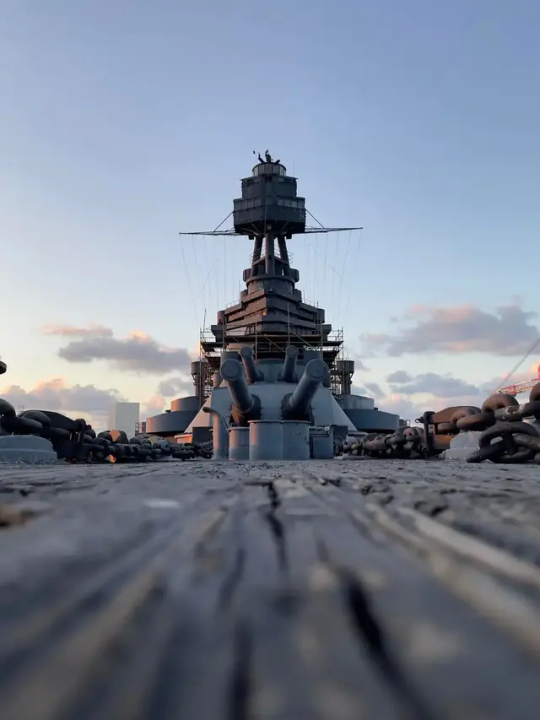
On the Deck of Battleship Texas
Dry Dock Tours are BACK! Discount available for those who return. For more information please visit: battleshiptexas.org/drydock

Dry Dock staff hang reproductions of the historic "Come on Texas!" banners across the gangway.
SHIP REPAIRS
TORPEDO BLISTERS - The new torpedo blisters are a slightly different design and square off at the bottom below the waterline. This design change will make the new blisters easier to maintain increasing their longevity.

The last of the torpedo blister plates are being added. (Starboard)
COATING - The inside of the blisters, and the ship's hull will be coated to protect against possible corrosion.

The bottom of the torpedo blisters that will now be exposed to the water have been cleaned and prepped. Doubler plates will go over these areas.

This docking keel has been cleaned and primed.
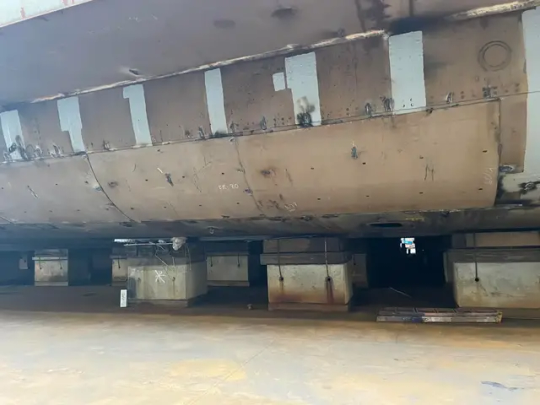
Doubler plates have already been added in some areas where the torpedo blisters once were.

Primer added to the end of one docking keel.

Repairs made to the ship's stern near the keel.
LEAK TESTING - All welds continue to be tested for leaks. They are done via vacuum box, dye penetrant or magnaflux depending on the area.
DECK REPAIRS - Gulf Copper's yard workers have concluded repairing the deck on the ship's Signal Bridge and have begun working on the deck above, the Navigation Bridge. A part of the deck repairs includes sand blasting the underside of the underside and painting on a coat of primer.
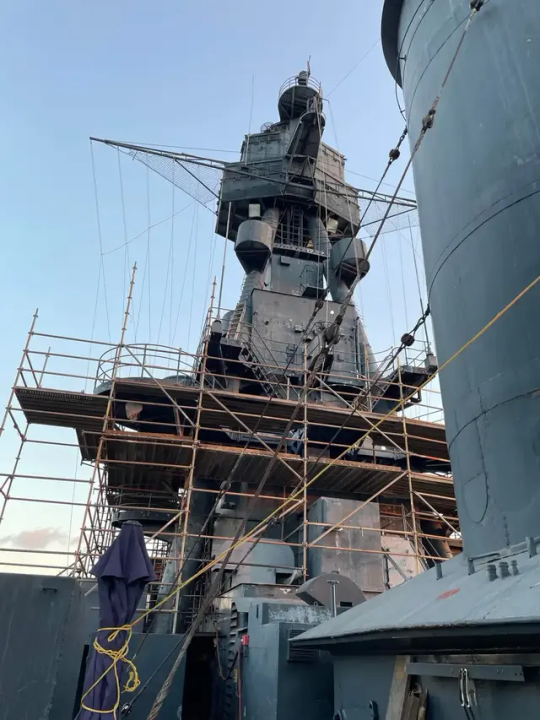
Scaffolding used to repair the superstructure of Battleship Texas.

Scaffolding used to repair the superstructure of Battleship Texas. Repairs have been made to the deck, bracing, and supports.
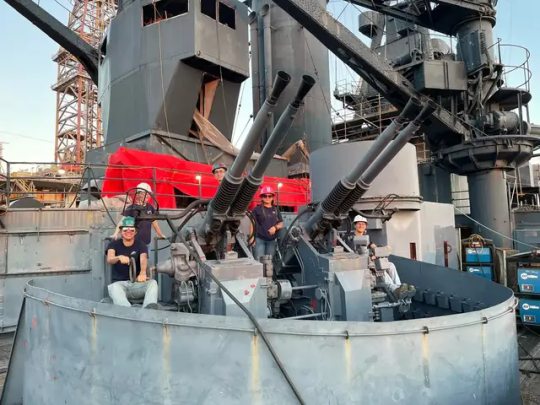
Dock Tour staff man the 40mm Bofors!
AFT FIRE CONTROL TOWER - Work continues in the AFCT as the old grating that was installed in 1988 has been completely removed and replaced with a steel deck. Small repairs to the bulkhead are currently ongoing as the plan is to have it look as it did in 1945.

Work continues on the ship's aft fire control. (New decking, doors replaced, etc)

Work on the ship's aft fire control. The doors will be added back, and if the budget allows, the windows too.

The door that is supposed to be on each side of tower has been opened.

The door that is supposed to be on each side of the Mower has been opened up again.
Live, Laugh, And Flood your Torpedo Blisters
Visit our website at: battleshiptexas.org"
Posted by Hunter Miertschin on the Battleship Texas Foundation Group Facebook page: link
#Battleship Texas#Battleship Texas Foundation#Update#USS Texas (BB-35)#USS Texas#New York Class#Dreadnought#Battleship#Warship#Ship#Drydock#Dry Dock#Galveston#Texas#repairs#Gulf Copper#Restoration#September#2023#my post
155 notes
·
View notes
Text
Transparent mouse breakthrough!!
Ou et al. found that applying a food dye (tartrazine) to the skin of live, hairless mice turned the skin temporarily/reversibly transparent!
The dye molecule absorbs in the near ultraviolet and blue region of the light spectrum, and changes the refractive properties of the aqueous (water-containing) portion of the skin to match the lipid (fat) portion of the skin, such that the refractive index in the red part of the spectrum is increased without increasing absorption. This essentially allows not-blue (mostly red) light waves to pass through the skin with minimal scattering, hit muscles, organs, and other internal structures, and pass back through the skin to our eyes, allowing us to see "inside" the mice. They tested this in three regions on the mice: in the abdomen to view fluorescent protein–labeled enteric neurons to track gut motility, in the scalp to visualize cerebral blood vessels, and in the hind limb to visualize individual sarcomeres (microscopic muscle units).

Initial safety tests seem promising, although further experiments are needed to fully explore how safe it is to dump that much dye into the skin.
Note: this doesn't mean we'll be able to do this to humans, exactly; human skin is much thicker than mouse skin, and we have far thicker fat between our skin/muscles/abdominal walls/organs, which will interfere with penetration. However, if safety tests bear out...this could have really cool implications for small animal veterinary medicine, biomedical research, microscopy, and any other settings where noninvasive internal imaging of small, thin-skinned animals is needed.
Article: Zihao Ou et al., Achieving optical transparency in live animals with absorbing molecules. Science 385 , eadm6869 (2024). DOI: 10.1126/science.adm6869
25 notes
·
View notes
Text
Spray Dryer Crack Testing in the Dairy Industry: Specific Challenges and Solutions

The dairy industry relies heavily on spray drying technology to produce milk powder, whey protein, and other dairy-based products. While the spray drying process in dairy ensures product consistency and extended shelf life, maintaining the safety and efficiency of spray dryers is a critical aspect of dairy industry quality control. One of the biggest challenges in this sector is the detection of cracks in spray dryers, which can lead to contamination, reduced equipment lifespan, and safety hazards. This is where spray dryer crack testing plays a vital role in ensuring compliance and efficiency.
Challenges in Spray Dryer Crack Testing
1. Identifying Hidden Cracks
Spray dryers operate under high temperatures and pressures, making them susceptible to wear and tear. Cracks can form in hard-to-reach areas, requiring advanced crack testing inspection techniques to detect them effectively. Traditional visual inspections may not be sufficient to identify micro-cracks that could compromise food safety in dairy processing.
2. Maintaining Compliance with Industry Standards
Regulatory bodies impose strict guidelines on spray dryer inspection methods to ensure that dairy processing equipment meets hygiene and safety standards. Failure to conduct regular spray dryer testing can lead to non-compliance, resulting in costly fines and potential production shutdowns.
3. Preventing Equipment Failure
Undetected cracks can worsen over time, leading to equipment failure in dairy plants. This not only causes operational downtime but also increases the risk of product contamination. Preventive maintenance for spray dryers through routine crack test inspection helps mitigate these risks.
4. Cost of Repair vs. Preventive Maintenance
Repairing or replacing damaged spray dryers can be expensive. Investing in spray dryer maintenance services through regular crack detection scans can help extend equipment life and reduce long-term operational costs.
Effective Solutions for Spray Dryer Crack Testing
1. Non-Destructive Testing (NDT) Techniques
One of the most effective approaches for crack detection in spray dryers is non-destructive testing in dairy processing plants. Methods such as dye penetrant testing, ultrasonic testing, and radiographic inspections provide accurate results without damaging the equipment. Spray dryer NDT testing providers offer specialized services to conduct these tests efficiently.
2. Advanced Crack Scanning Technology
Using advanced crack scanning and Spray Dryer Scan techniques, experts can locate cracks in both visible and hidden areas. This ensures a comprehensive crack scan for dairy processing equipment, reducing the chances of undetected defects.
3. Hiring Professional Inspection Services
To maintain the highest standards, it is essential to work with experienced spray dryer inspection services. Dairy plant safety inspection companies offer specialized vessel crack test inspection services that help identify potential issues before they escalate.
4. Investing in Reliable Testing Equipment
Dairy manufacturers looking to enhance their in-house testing capabilities can buy spray dryer crack testing equipment from reputable spray dryer equipment suppliers. Having access to crack testing tools for dairy processing allows for regular inspections, ensuring long-term safety and efficiency.
Why Regular Spray Dryer Inspections Matter
Regular industrial spray dryer inspection services are crucial for the following reasons:
Food Safety Assurance: Prevents contamination by detecting cracks that could harbor bacteria.
Extended Equipment Lifespan: Identifies minor defects before they lead to significant failures.
Regulatory Compliance: Helps meet industry standards and avoid penalties.
Cost Savings: Reduces downtime and expensive repairs through proactive maintenance.
Also, read - Introduction To Spray Drying And Crack Testing Inspection Of Spray Dryers
Choosing the Right Experts for Crack Detection
When looking for tank inspection services, it is essential to partner with a trusted tank inspection company specializing in dairy industry requirements. Hire experts for spray dryer crack detection who use advanced tools and methodologies to ensure thorough testing.
Case Study - Inspection & Repair of Infant Formula Spray Dryers: Vietnam
Conclusion
Spray dryer crack testing is a critical aspect of dairy processing equipment maintenance. By employing the right spray dryer testing methods and working with experienced spray dryer inspection services, dairy manufacturers can ensure product quality, operational efficiency, and regulatory compliance. Investing in crack detection technologies and spray dryer maintenance services helps prevent costly failures and ensures the safety of dairy products.
For professional crack testing inspection services and advanced crack scan technology, Bioscan LTD offers reliable solutions tailored to the needs of the dairy industry.
Visit Bioscan LTD for expert spray dryer crack inspection and dairy industry compliance testing services.
#SprayDryerCrackTesting#DairyIndustryQualityControl#CrackDetectionServices#SprayDryerInspection#FoodSafetyInDairyProcessing
1 note
·
View note
Text
Second Adoptable
“Bubbles”
Any Pronouns
Bubbles is a clear slimeperson who doesn’t really have an age. Their brain is a especially gelatinous mass that has the texture of jello, whereas their body tends to be much softer but hardens to a texture like chewed bubblegum when exposed to water. They tend to modify their body’s color by using packets of Koolaid powder to dye themself for the day. They have complete control of their body’s shape and size as well. They tend not to keep a single form for more than a day so their appearance changes constantly. However they tend to prefer pink for their skin and yellow for their hair. They use an androgynous look for their daily life but will switch to more masc or femme while at home.
Bubbles is as their name would imply a bubbly personality, while they maintain their brain they are quite smart but they enjoy letting their brain deform and drop their IQ. Doing so generally requires around ten minutes to properly reform her brain. She works as a cashier on weekends and is in art school during the week. He enjoys candy and juice, fruit flavors are his favorite. They like painting, mainly doing finger painting as she thinks it’s an art that is underestimated Bubbles doesn’t care for gender much and will freely switch presentation whenever she wants.
She has a major oral fixation, both his own mouth and others. They enjoy shrinking down to very small sizes and being chewed like bubblegum, since she tastes sweet it’s quite fun. He adores transformation as their body can be easily shaped and moulded and inflated by hand. Due to her slime physiology anywhere on her body can be penetrated and they find great pleasure in feeling their brains getting fucked into an absolute mess.
Bubbles was a laboratory made slime that quickly formed a brain through observing art. It pushes the importance of art in all things. She was raised by scientist who loved their work and took many inspirations from their passion. They made sure to never do any tests that Bubbles did not consent to and they gave her a proper education. She’s studying visual arts and takes psychology lessons from some of the scientists who raised him, in order to help make art that can help people’s development.
Kink list: Transformation, Expansion, Oral Fixation, Spit/saliva, brainfucking, soft vore
Available for 3$CAD for just the adoptable or 6$CAD for the adoptable and a 1k word story. DM me to discuss payment.
34 notes
·
View notes
Text
In a series of experiments described in Science, the researchers show how a fresh chicken breast became transparent to red light minutes after being immersed in tartrazine solution, a yellow food dye used in US Doritos, SunnyD drink and other products. The dye reduced light scattering inside the tissue, allowing the rays to penetrate more deeply
6 notes
·
View notes
Text
Top 5 Less Price and Effective Cleansers in Amazon
In Skin Care Routine, cleansing lays the foundation for healthy and radiant skin. Amazon offers a so many options when it comes to facial cleansers. In this post, we'll delve into what cleansers are, how to use them, common ingredients, and unveil the top 5 cleansers available on Amazon that can transform your skincare game.
What is a Cleanser?
Cleansers are skincare products designed to remove dirt, oil, makeup, and impurities from the skin. They help maintain a clean and clear complexion by preventing breakouts and promoting a healthy skin barrier.
How to Use a Cleanser:
Wet your face: Start by splashing your face with lukewarm water to open up your pores.
Apply the cleanser: Gently massage a small amount of the cleanser onto your face using circular motions.
Rinse thoroughly: Rinse your face with water to remove the cleanser, and pat dry with a clean towel.
Common Ingredients and Their Benefits:
Hyaluronic Acid: Provides hydration and retains moisture.
Salicylic Acid: Helps exfoliate and unclog pores, suitable for acne-prone skin.
Glycerin: Moisturizes and prevents skin dehydration.
Vitamin C: Brightens the complexion and reduces the appearance of dark spots.
Tea Tree Oil: Known for its antibacterial properties, ideal for acne-prone skin.
Top 5 Cleansers
1. Minimalist Gentle Cleanser

Minimalist Hydrating Gel Cleanser, perfect for normal to sensitive skin, boasts a sulfate-free formula with 6% Oat extract for a calming effect.
Hyaluronic acid ensures multi-level hydration, while Bisabolol and Vitamin B5 repair, restore, and combat signs of aging. Crafted with care from Croda, UK, in a 120ml bottle for a revitalized complexion.
Price: ₹284 only
Buy: https://amzn.to/41m8MwC
2. Cetaphil Face Wash Gentle Skin Cleanser
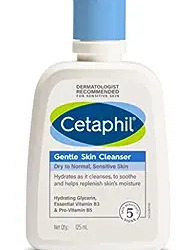
Cetaphil's Cream Skin Cleanser, designed for dry to normal sensitive skin, stands out with its non-comedogenic, hypoallergenic formula. Free from parabens, sulfates, fragrances, and oils, this dermatologist-recommended cleanser utilizes Micellar Technology to gently remove dirt, makeup, and impurities.
Clinically proven for continuous hydration, it blends Niacinamide, Vitamin B5, and hydrating Glycerin to reinforce the skin's natural moisture barrier. Defending against 5 signs of skin sensitivity, this cream cleanser is perfect for adults aged 18 and above, ensuring a refreshed, protected, and well-hydrated complexion.
Price: ₹283 only
Buy: https://amzn.to/46V8C0g
3. The Derma Co 2% Niacinamide Gentle Skin Cleanser

The Derma Co's Liquid Cleanser, a nourishing solution suitable for all skin types.
Crafted for adults, this unscented cleanser is carefully formulated with 2% Niacinamide and Cica-Extract, protecting the skin's barrier and soothing sensitive skin.
The 100% soap-free formulation ensures gentle yet effective cleansing, removing impurities without irritation. Maintaining the skin's oil balance, this white gel-based foaming cleanser hydrates for 24 hours post-wash without stripping natural oils. Free from mineral oil, dye, parabens, and sulfates, it's ideal for dry, normal, and sensitive skin, leaving a visible difference after each use. A safe and effective choice for a refreshed complexion.
Price: ₹265 only
Buy: https://amzn.to/3NqgJuP
4. L'Oreal
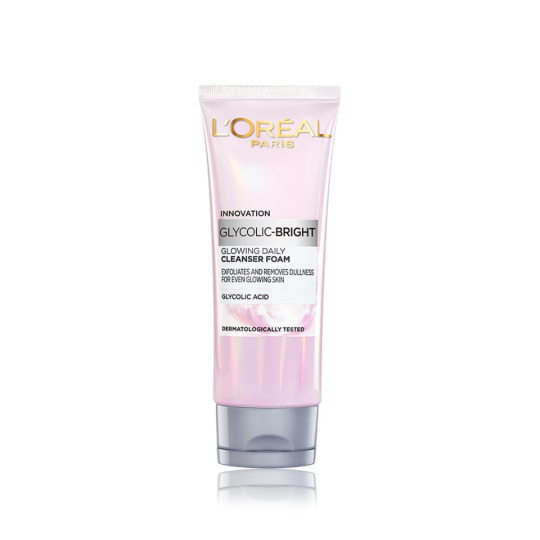
Introducing L'Oreal Paris' Mousse Face Wash, a refreshing solution suitable for all skin types.
This dermatologist-tested mousse, scented with Aloe Vera, effortlessly removes impurities, makeup, and sebum on the go. Formulated with powerful Glycolic Acid, known for dermatological peeling treatments, it deeply penetrates and exfoliates the skin, keeping dullness at bay.
Achieve visible results with regular use, as it removes melanin and accelerates cell renewal. Dermatologically tested and suitable for all skin types, including sensitive skin, this 50.0 gram mousse ensures a clean, revitalized complexion with each use.
Price: ₹139 only
Buy: https://amzn.to/3RnzT61
5.Neutrogena Deep Clean Foaming Cleanser
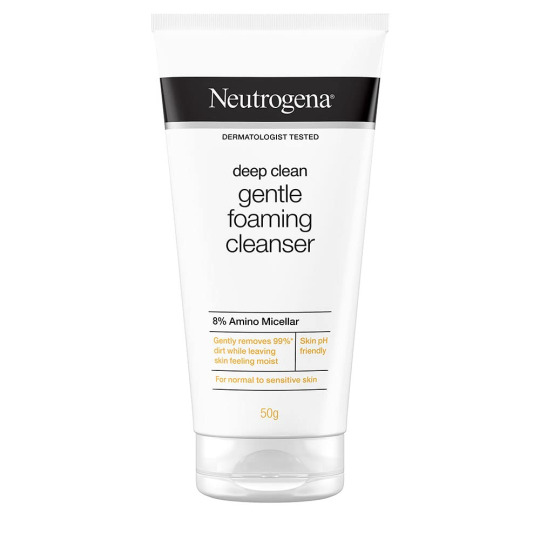
Neutrogena's Oil-Free Face Foam Cleanser, specially designed for combination skin.
This dermatologist-tested oil formulation offers a refreshing fresh scent. Effectively removing dirt, oil, and dead skin cells, it keeps the skin clean and fresh while providing long-lasting oil control.
Ideal for normal-to-oily skin, it is non-comedogenic and dermatologist-tested, ensuring a gentle yet effective cleansing experience. The 50-count packaging offers convenience and reliability for your skincare routine. For women seeking a solution that balances and refreshes, Neutrogena's Oil-Free Face Foam Cleanser is your go-to choice.
Price: ₹148 only
Buy: https://amzn.to/3RnMrdg
NOTE:
Please note that we regularly update product prices and availability. While we strive for real-time accuracy, updates may occasionally take some time. Rest assured, any changes will be minor, and we appreciate your understanding.
2 notes
·
View notes
Text
Advanced Dye Penetrant Inspection in Pune: Accurate Liquid Dye Penetrant Testing Solutions
At Integrated NDE, we specialize in Dye Penetrant Inspection in Pune, providing reliable and accurate liquid penetrant testing services across various industries. Dye penetrant inspection, also known as liquid dye penetrant testing, is a widely used non-destructive testing (NDT) method to detect surface-breaking defects in materials. This technique is essential for identifying cracks, porosity, and other imperfections that may compromise the integrity of a structure.
Our dye penetrant testing process begins by applying a visible or fluorescent dye to the material's surface. The dye penetrates into any surface flaws through capillary action. After a specified dwell time, the excess dye is removed, and a developer is applied, drawing out the penetrant trapped in the defects. This step highlights the flaws, making them visible for inspection under appropriate lighting conditions. The entire liquid penetrant inspection process is carried out by our experienced technicians, ensuring thorough and accurate results.
At Integrated NDE, we utilize advanced equipment and adhere to stringent industry standards to deliver precise penetrant inspection services. Our expertise extends to various materials, including metals, plastics, and ceramics, making us a trusted partner for liquid penetrant inspection in critical applications. Whether you need to assess welds, castings, or other components, our liquid penetrant techniques provide a reliable means of ensuring quality and safety.
In addition to our expertise in dye penetrant inspection, we are committed to providing timely and cost-effective solutions tailored to meet the specific needs of our clients. Our services are designed to help you maintain the highest levels of material integrity, reduce the risk of failure, and ensure compliance with industry regulations. Trust Integrated NDE for all your dye penetrant and liquid penetrant testing needs, and experience the assurance of working with a leader in non-destructive testing services in Pune.
#Dye penetrant inspection in pune#dye penetrant#liquid penetrant testing#dye penetrant testing#liquid dye penetrant testing#penetrant inspection#liquid penetrant inspection#liquid penetrant
0 notes
Text
Rough understanding of what the article said (for those that don’t feel like reading it):
General info about light, color, and transparency/opaqueness:
We see color when certain wavelengths of light reflect off a surface and into our eyes.
When light traveling through one material (such as air) reaches a second material, some of the light is reflected (which is the color we see), and some of the light will enter the second material. When objects prevent any light from passing through them (all of the light that hits it is either reflected or absorbed), they are opaque (not transparent). Transparent objects allow light to pass through them, with little reflection or absorption, which can be caused by refraction (explained below).
Different materials are made of different types of particles, which interact with the light wave and cause it to change speed. When the speed of the light wave is slowed and doesn’t hit the second material head on, this causes the light wave to change direction. This respiration of the light wave as it passes to a second material is called refraction.
Why skin is opaque:
Skin and biological tissue are made up of mostly water and fats, which refract light very differently. When light enters the skin, it bounces around a lot because the water and fats keep refracting it differently. This elongates the path length is takes for the light to get all they way through the skin and out the other side. This makes it MUCH more likely for the light to be absorbed along the way because the light wave bounces off of more surfaces the longer it stays in the body, and therefore there are more chances for it to be absorbed. When light is absorbed and doesn’t pass through a material, the object becomes opaque.
Why Dorito Dye made the skin transparent:
When these researchers massaged the Yellow 5 (Tartrazine) dye into mouse skin, it changed how much the water components of skin refract light, and made the water refract light more like fat. As a result, the light bounced much less when going through the skin, which shortened the path to get to the other side of the skin and led to less absorbance of the light. Because the majority of the light passed through the skin without being absorbed, this made the skin layer transparent.
The method isn’t perfected in the sense that the light can only penetrate so far into the tissue (but 10-fold better than before). Mouse toxicology studies are coming back very safe, but
THEY STRONGLY DISCOURAGE HUMANS TRYING THIS ON THEIR OWN SKIN BECAUSE THE TOXICOLOGY HAS NOT BEEN FULLY TESTED IN HUMANS!!!!
Anyway, INSANELY cool stuff! There’s a lot of hope here for less invasive testing in the future!
Photo of the opaque and transparent versions of mouse skin photo under the cut.

girl what?

29K notes
·
View notes
Text
Why Your Business Needs a Reliable Industrial Water Heater Manufacturer in Delhi—Seriously
You know what? Choosing a water heater maker right here in Delhi is more than just geographic convenience. You need parts, service, the works.Industrial Water Heater Manufacturer in Delhi mean you get same-day responses, quicker deliveries and on-site inspection by someone who knows the terrain. No timezone headaches, no miscommunications. It’s just smooth coordination.
Cost Efficiency: More Than Just Savings
A trusted Delhi-based manufacturer crushes those extra costs. You're paying INR, not USD or EUR. Trust me, even swings in exchange rates hit you hard if you’re doing regular replacements or large batches. Plus, because they’re operating locally, they often offer more competitive rates and flexible payment terms—like EMI or Net 60—especially if you're a repeat customer. That gives you working capital freedom. Who doesn't want that?
Tailored Solutions That Fit Your Process
Generic heater units? Maybe they get the job done, but they rarely fit your unique setup. A good Industrial Water Heater Manufacturer in Delhi will walk your plant floor, understand your water chemistry, and help you decide—do you really need a 6,000-litre steel coil, or will a more efficient cupronickel do the trick?
They’ll recommend sensors based on your PLC and SCADA systems, suggest CIP-friendly designs, and even throw in eco-friendly insulation upgrades that cut heat loss. It's that hands-on, customised approach that makes your operations leaner and more reliable.
Quality Assurance You Can See—and Smell
Seriously, the smell of fresh-welded steel, the clank of a pressure vessel being hydro-tested on-site—it gives you confidence. Transparent quality control is everything. You can demand material certificates, inspect welds under dye-penetration, and witness pressure tests yourself.
No random QA report sent via email. It’s real. When you can walk through those steps with the team that built your heater, trust becomes more than just marketing copy.
Regulatory Compliance Made Simple
In B2B, you’ve got ISO audits, environmental benchmarks, boiler regulations—it's a maze. Delhi manufacturers usually have all certifications ready. They know the local pollution board norms, they get the boiler inspector’s approvals, and they help you with paperwork. That saves you from nasty penalties. Plus, if you ever need a site inspection, they come along.
It's not just about selling; it's about making sure your operations stay legal, safe, and accredited.
Faster Project Execution & Rollout
Time is money. No more waiting 8 weeks for sea freight. Local manufacturers can often deliver in 3–4 weeks, sometimes less if they have stock. So when you’re commissioning a new line, you won't hit unexpected delays.
They can also help schedule installation around your shift patterns. And if you're launching in August (peak monsoon), they’ll plan for weather delays during outdoor installation. That kind of unspoken foresight? It’s golden in industrial projects.
Sustainability Snapshot
Here’s something cool: a lot of Delhi-based shops now make green boilers—low NOx, high-efficiency. They’re switching to biofuel burners or electric heaters powered by renewable energy. If sustainability matters to your brand or future ESG scores, these guys can help you hit solar integration or waste-heat recovery goals without fuss. And they’ll actually explain the carbon savings, not just plaster “eco” stickers on a brochure.
Building Long-Term Trust
Let’s be honest: business is built on trust. You need a partner, not just a vendor. Delhi manufacturers regularly host plant tours, site visits, and open-house demo days. They even co-sponsor industrial events and training workshops.
That says something—they’re not hiding in brochures. You can meet their engineers, ask tough questions, and judge their knowledge. Deal with that level of transparency and you get more than heaters; you get a dependable industrial ally.
Innovation & Adaptability
Last point. Recently, several Delhi firms started integrating IoT for real-time monitoring. Imagine getting alerts if your heater's outlet temperature is off by even 2 degrees. Low water level? It pings your maintenance crew. Leak? Right away. They also adapt units based on seasonal demand—ramps for winter or insulating jackets for Delhi summers. It’s evolution in real time.
Final Thoughts
Buying from a trusted Delhi-based industrial water heater manufacturer is about more than parts. It’s about real relationships, operational insight, and smart, efficient systems that align with your business.
You get cost predictability, regulatory peace of mind, and a partner who’s in sync with your plant’s daily grind. So next time you need to scope out a new heater, take the trip to Delhi—or invite them over. Those quick chats, factory walks, and hands-on demos? They pay dividends far beyond the invoice.
0 notes
Text
October 29, 2023 Update from the Battleship Texas Foundation
"DRY DOCK TOURS

A gloomy day here at Gulf Copper Shipyard!
Dry Dock Tours are scheduled until the end of January 2024. Discount available for those who return. See you all in November! For more information please visit: battleshiptexas.org/drydock
SHIP REPAIRS
TORPEDO BLISTERS (COMPLETE) - The new torpedo blisters are a slightly different design and square off at the bottom below the waterline. This design change will make the new blisters easier to maintain increasing their longevity.

Some of the bilge keels removed off Battleship Texas. These will not be going back on the ship, but they will be saved for a future purpose.

The bilge keels removed off Battleship Texas. These will not be going back on the ship, but they will be saved for a future purpose.
SANDBLASTING - The ship’s hull is now being sandblasted at night, and inspected for holes and damage during the day. The necessary repairs are made before a coat of black primer is applied.

This area of the ship’s hull has been recently sandblasted.

This area of the ship’s hull has been recently sandblasted.

A blasted section of the ship’s stern reveals some damage from corrosion.

A blasted section of the ship’s stern reveals some damage from corrosion.
HULL NUMBER - The new hull numbers have been extensively researched so each number is not only the correct font, but applied in the appropriate position it was in 1945. Welders have created an outline where that will be painted on in the near future.

The new “35” that will be painted on Battleship Texas.
SHIP’S NAME - The lettering for the ship’s name has been cut from steel plate and will be attached to both sides of the stern. A ton of work and research went into getting the correct font and positioning. Welders have created an outline showing where it will go.

The new “35” and “TEXAS” outlines have been applied. The ship’s name will be steel lettering while the 35 will be painted on.
COATING - The inside of the blisters, and the ship’s hull will be coated to protect against possible corrosion.

A black primer has been applied to this area of the ship’s hull after sandblasting and inspection.

A black primer has been applied to this area of the ship’s hull after sandblasting and inspection.

Keel blocks have been moved and this area has been blasted, repaired, and primed.

A newly primed area on the ship’s hull.

New steel between the ship’s port side auxiliary keel and keel. This steel is 5/8” thick.
TANK CLEANING - Tanks inside the ship are being inspected, cleaned, and repaired if need be. Some will be coated with a marine coating to help prevent future corrosion.

A tank has been closed back up after inspection. Leak testing of the welds has begun.
LEAK TESTING - All welds continue to be tested for leaks. They are done via vacuum box, dye penetrant, or magnaflux depending on the area.

Looking aft underneath Battleship Texas. The ship’s keel is visible on the left.

New steel is being placed on the ship’s hull.

Some corrosion damage near the bow of Battleship Texas.

Tracks from unexpected visitors underneath Battleship Texas.
Live, Laugh, And Flood your Torpedo Blisters.
Visit our website at: battleshiptexas.org"
Posted on the Battleship Texas Foundation Group Facebook page: link
#battleship Texas#Battleship Texas Foundation#Update#USS TEXAS (BB-35)#USS TEXAS#New York Class#Dreadnought#Battleship#Warship#Ship#Drydock#Dry Dock#Galveston#Texas#repairs#Gulf Copper#Restoration#October#2023#my post
76 notes
·
View notes
Text
Why Every Industry Should Prioritize Tank Crack Testing
Tank crack testing is an essential practice that every industry should prioritize to ensure the safety, efficiency, and longevity of their storage vessels. Whether in the chemical, petroleum, food, or pharmaceutical sector, the integrity of tanks and silos directly impacts operational reliability and environmental safety.
Cracks in tanks can lead to catastrophic failures, resulting in product loss, environmental contamination, and significant financial repercussions. By investing in vessel crack test inspection services, industries can identify potential issues before they escalate into serious problems. Regular tank inspections not only help in maintaining compliance with industry regulations but also contribute to the overall sustainability of operations.
Tank inspection services employ advanced techniques such as ultrasonic testing, magnetic particle inspection, and dye penetrant testing to assess the structural integrity of storage vessels. These methods allow for accurate identification of cracks, leaks, or weaknesses in tank walls, which can then be addressed promptly. Proactive measures taken through tank crack testing can save companies from expensive repairs and downtime, thus protecting their bottom line.
Moreover, tank crack testing enhances safety for employees and the surrounding community. By detecting flaws early, companies can mitigate risks associated with hazardous materials, preventing accidents and ensuring a safe working environment. This commitment to safety can also improve a company’s reputation, fostering trust among customers and stakeholders.
In today’s competitive landscape, it is vital for industries to prioritize preventive maintenance, and tank crack testing is a critical component of this strategy. Regular vessel crack test inspection services not only protect assets but also promote a culture of safety and responsibility.
In conclusion, investing in tank crack testing is a smart decision for any industry looking to safeguard its operations. By embracing tank inspection services, companies can enhance operational efficiency, ensure compliance, and protect their environment and workforce.
#TankCrackTesting#VesselInspection#TankInspectionServices#SafetyFirst#PreventiveMaintenance#IndustrialSafety#EnvironmentalProtection#LeakDetection#AssetManagement#Compliance#HazardousMaterials#RiskManagement#StructuralIntegrity#SiloInspection#InspectionServices
1 note
·
View note